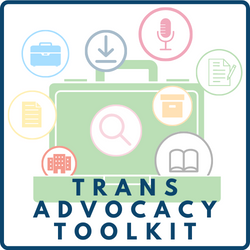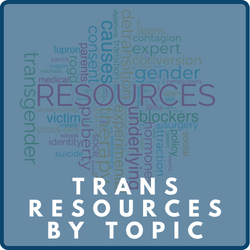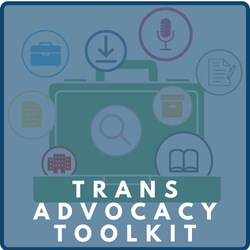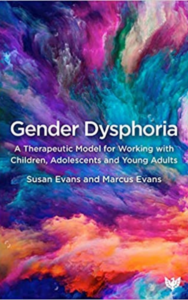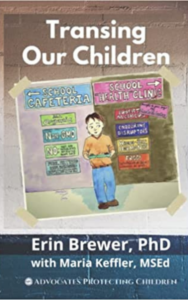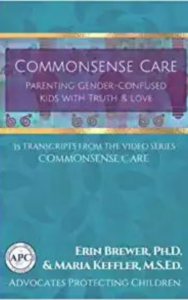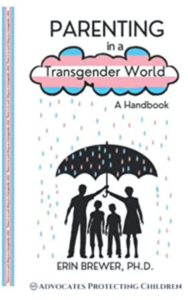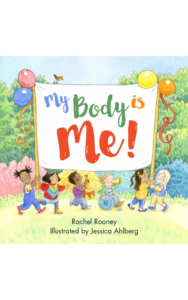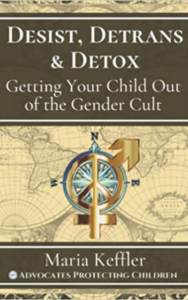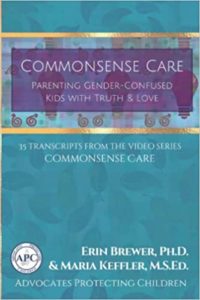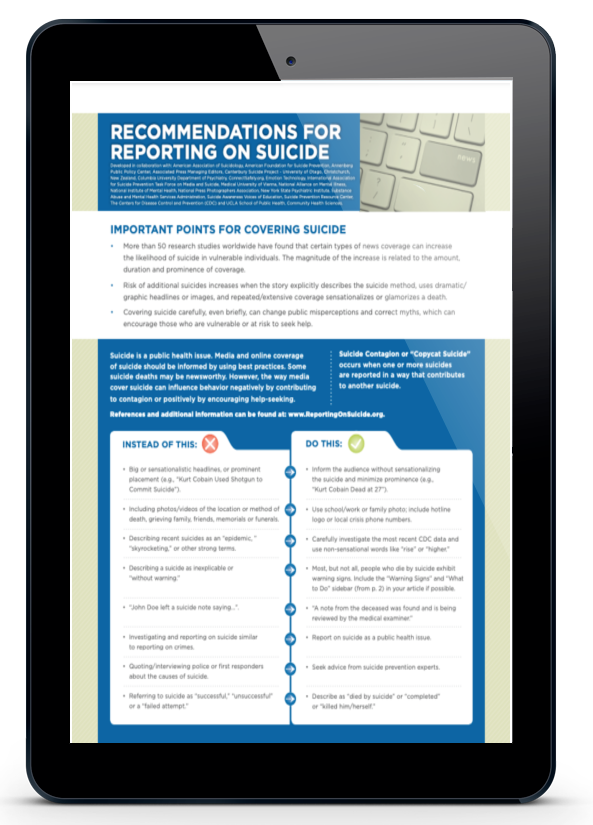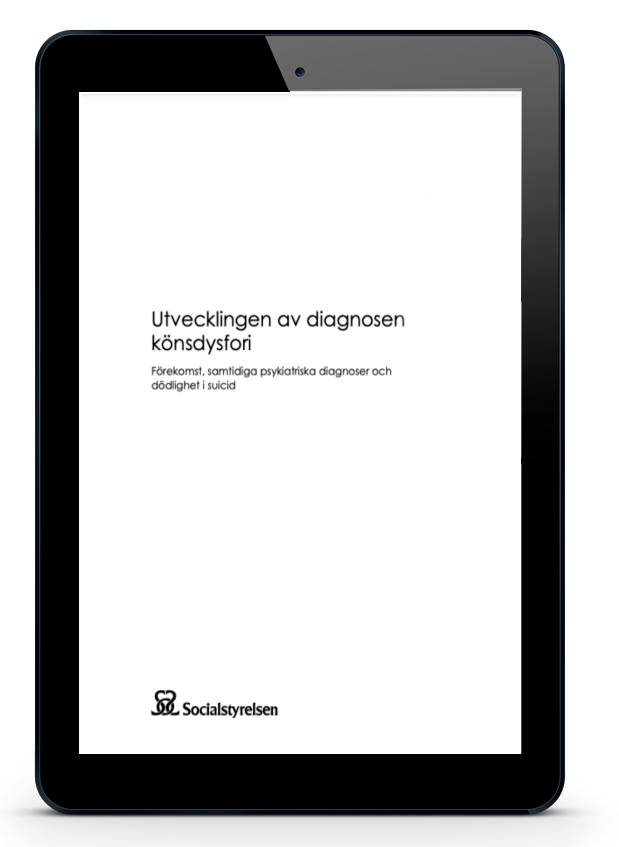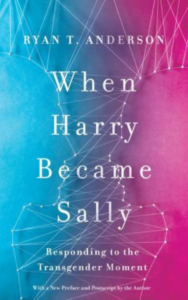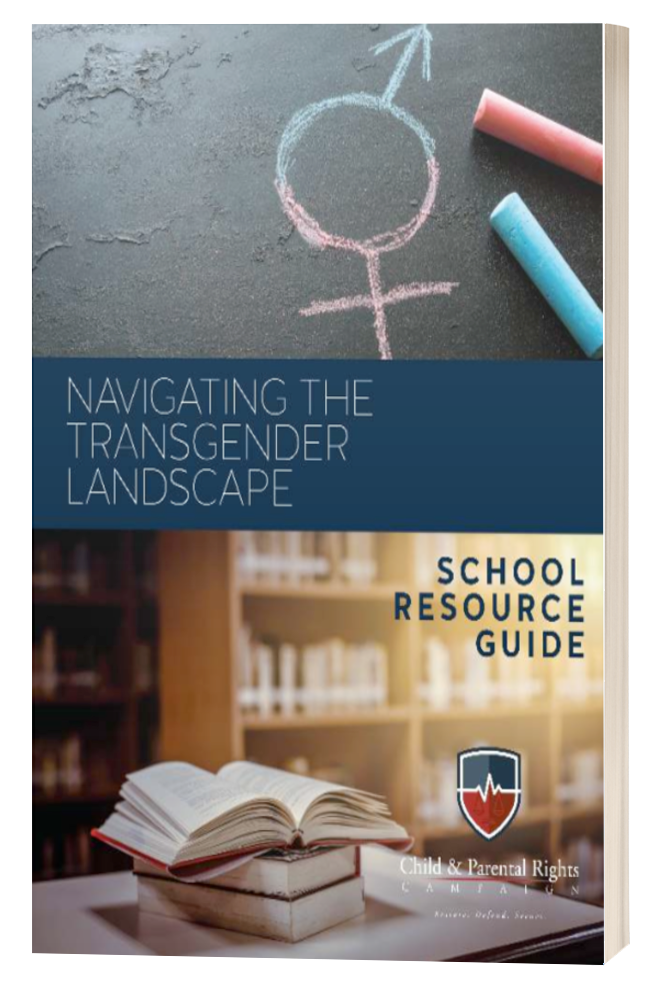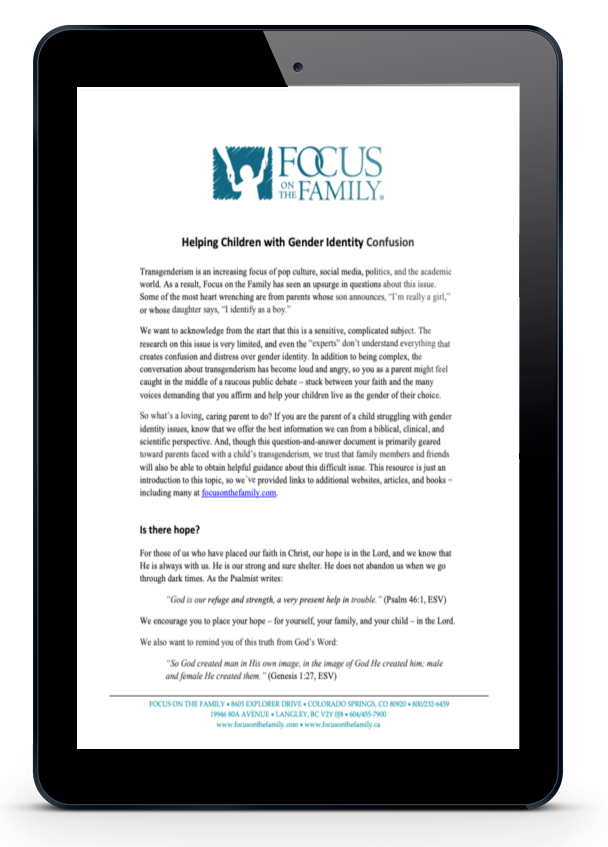UNDERSTANDING TRANSGENDER ISSUES
Resources by Topic
PUBERTY BLOCKERS | CROSS-SEX HORMONES | SURGERY | CONSENT | POTENTIAL CAUSES | ROGD | SUICIDE | SOCIAL TRANSITION | MEDICAL TRANSITION | SOCIAL CONTAGION | PARENTAL RIGHTS | POLICIES | EXPERIMENTATION | LEGISLATION | SOGI | WOMEN’S SPORTS | PUBLIC ACCOMMODATIONS | BIRTH CERTIFICATES | INTERSEX/DSD | COMPELLED SPEECH | AFFIRMATION | GENDER DYSPHORIA | DESISTERS/DETRANSITIONERS | THERAPY BANS
Potential Causes
Books
Videos
Gender Dysphoria in Children: A Cry for Help Not Hormones
The Boyce of Reason
Commonsense Care
Dysphoric
Medical Harms from the Treatment of Child and Adolescent Gender Dysphoria
The Rise of Transgender Medicine
Detransition Conference and medical ethics in the age of gender identity
ROGD Webinar
Trans Mission
Trans Train
Utah House Judiciary Committee Hearing Highlights on HB 399
Gender
Michelle Cretella
Organizations
Research
Do trans- kids stay trans- when they grow up?
In total, there have been three large scale follow-up studies and a handful of smaller ones. I have listed all of them below, together with their results. (In the table, “cis-” means non-transsexual.) Despite the differences in country, culture, decade, and follow-up length and method, all the studies have come to a remarkably similar conclusion: Only very few trans- kids still want to transition by the time they are adults. Instead, they generally turn out to be regular gay or lesbian folks. The exact number varies by study, but roughly 60–90% of trans- kids turn out no longer to be trans by adulthood.
For adolescents with gender dysphoria, it has become common to be offered hormonal treatment to either delay or suppress pubertal development and/or to masculinize or feminize the body. At the same time, it has been our clinical impression that the psychological vulnerability of at least some of these youth has been overlooked.
Studies of children with gender dysphoria (GD) have reported an overrepresentation of autism spectrum disorder (ASD) or traits. One limitation of these studies has been the absence of a concurrent comparison group of children referred for other clinical problems. The present study addressed this gap by comparing 61 children referred for GD with 40 children referred for other clinical concerns (age range, 4–12 years).
In on-line forums, parents have reported that their children seemed to experience a sudden or rapid onset of gender dysphoria, appearing for the first time during puberty or even after its completion. Parents describe that the onset of gender dysphoria seemed to occur in the context of belonging to a peer group where one, multiple, or even all of the friends have become gender dysphoric and transgender-identified during the same timeframe. Parents also report that their children exhibited an increase in social media/internet use prior to disclosure of a transgender identity.
Do children with gender dysphoria have intense/obsessional interests?
This study examined whether children clinically referred for gender dysphoria (GD) show increased symptoms of autism spectrum disorder (ASD).
Epidemiology of gender dysphoria and transgender identity
This review provides an update on the epidemiology of gender dysphoria and transgender identity in children, adolescents and adults.
Temple Newhook et al. (2018) provide a critique of recent follow-up studies of children referred to specialized gender identity clinics, organized around rates of persistence and desistance. The critical gaze of Temple Newhook et al. examined three primary issues: (1) the terms persistence and desistance in their own right; (2) methodology of the follow-up studies and interpretation of the data; and (3) ethical matters. In this response, I interrogate the critique of Temple Newhook et al. (2018).
Adolescents with Gender Dysphoria: Reflections on Some Contemporary Clinical and Research Issues
This article provides an overview of five contemporary clinical and research issues pertaining to adolescents with a diagnosis of gender dysphoria: (1) increased referrals to specialized gender identity clinics; (2) alteration in the sex ratio; (3) suicidality; (4) “rapid-onset gender dysphoria” (ROGD) as a new developmental pathway; (5) and best practice clinical care for adolescents who may have ROGD.
Debate: Different strokes for different folks
A gender social transition in prepubertal children is a form of psychosocial treatment that aims to reduce gender dysphoria, but with the likely consequence of subsequent (lifelong) biomedical treatments as well (gender-affirming hormonal treatment and surgery).
Prevalence studies conclude that fewer than 1 in 10,000 adult natal males and 1 in 30,000 adult natal females experience GD, but such estimates vary widely. GD in adults is associated with an elevated prevalence of comorbid psychopathology, especially mood disorders, anxiety disorders, and suicidality.
Objective This study assessed whether children clinically referred for gender dysphoria (GD) show symptoms that overlap with Autism Spectrum Disorder (ASD). Circumscribed preoccupations/intense interests and repetitive behaviors were considered as overlapping symptoms expressed in both GD and ASD.
The DSM-5 and the Politics of Diagnosing Transpeople
In the DSM-5, there has been a change in the diagnosis for transpeople of all ages from Gender Identity Disorder (GID) to Gender Dysphoria (GD), in part to better indicate the distress that transpeople may experience when their gender identity feels incongruent.
The treatment for transsexualism is sex reassignment, including hormonal treatment and surgery aimed at making the person’s body as congruent with the opposite sex as possible. There is a dearth of long term, follow-up studies after sex reassignment.
Detransition-Related Needs and Support: A Cross-Sectional Online Survey
The aim of this study is to analyze the specific needs of detransitioners from online detrans communities and discover to what extent they are being met.
Psychiatry’s ethical involvement in gender-affirming care
To reflect on the role of psychiatry in authorising physical treatments for Gender Dysphoria and to examine the quality of evidence for gender-reassignment.
One Size Does Not Fit All: In Support of Psychotherapy for Gender Dysphoria
We agree with Turban et al.’s (2020) position that therapies using coercive tactics to force a change in gender identity have no place in health care. We do, however, take issue with their problematic analysis and their flawed conclusions, which they use to justify the misguided notion that anything other than “affirmative” psychotherapy for gender dysphoria (GD) is harmful and should be banned.
A Typology of Gender Detransition and Its Implications for Healthcare Providers
Gender detransition is an emerging yet poorly understood phenomenon in our society. In the absence of research, clinicians and researchers have applied the concept of detransition differently, leading to inconsistencies in its use. The article suggests a typology of gender detransition based on the cessation or the continuation of a transgender identity to address this issue.
This prospective study examines the clinical characteristics of children (n = 79; 8.42–15.92 years old; 33 biological males and 46 biological females) presenting to a newly established, multidisciplinary Gender Service in New South Wales, Australia, and the challenges faced by the clinicians providing clinical services to these patients and their families.
Aricles
Powerpoints
Policy Briefs
Select a category
Books
Videos
Commonsense Care
Censoring studies on trans people
My experience with PLANNED PARENTHOOD
NHS child gender clinic: Staff welfare concerns ‘shut down’ – BBC Newsnight
ROGD Webinar
Organizations
Guides
Research
Evidence for an altered sex ratio in clinic-referred adolescents with gender dysphoria
Sociological and sociocultural explanations are offered to account for this recent inversion in the sex ratio of adolescents with gender dysphoria.
In on-line forums, parents have reported that their children seemed to experience a sudden or rapid onset of gender dysphoria, appearing for the first time during puberty or even after its completion. Parents describe that the onset of gender dysphoria seemed to occur in the context of belonging to a peer group where one, multiple, or even all of the friends have become gender dysphoric and transgender-identified during the same timeframe. Parents also report that their children exhibited an increase in social media/internet use prior to disclosure of a transgender identity.
The study’s purpose was to describe a population of individuals who experienced gender dysphoria, chose to undergo medical and/or surgical transition and then detransitioned by discontinuing medications, having surgery to reverse the efects of transition, or both.
Adolescents with Gender Dysphoria: Reflections on Some Contemporary Clinical and Research Issues
This article provides an overview of five contemporary clinical and research issues pertaining to adolescents with a diagnosis of gender dysphoria: (1) increased referrals to specialized gender identity clinics; (2) alteration in the sex ratio; (3) suicidality; (4) “rapid-onset gender dysphoria” (ROGD) as a new developmental pathway; (5) and best practice clinical care for adolescents who may have ROGD.
Prevalence studies conclude that fewer than 1 in 10,000 adult natal males and 1 in 30,000 adult natal females experience GD, but such estimates vary widely. GD in adults is associated with an elevated prevalence of comorbid psychopathology, especially mood disorders, anxiety disorders, and suicidality.
Detransition-Related Needs and Support: A Cross-Sectional Online Survey
The aim of this study is to analyze the specific needs of detransitioners from online detrans communities and discover to what extent they are being met.
Aricles
Podcasts
Powerpoints
Policy Briefs
Books
Videos
Commonsense Care
The Rise of Transgender Medicine
Organizations
Guides
Research
Self-Harm and Suicidality in Children Referred for Gender Dysphoria
This study examined rates of self-harm and suicidality (ideation and behavior) in children referred clinically for gender dysphoria compared with their siblings, and referred and nonreferred children from the Child Behavior Checklist (CBCL) standardization sample.
The Tavistock’s Experiment with Puberty Blockers
The Dutch protocol promised to create a more passable simulacrum of the opposite sex than could be achieved by physical intervention in adulthood. It was therefore embraced by trans-identified children and their parents, by older transgender activists, and by some clinicians specializing in gender dysphoria. The Gender Identity Development Service (GIDS), part of the Tavistock and Portman NHS Foundation Trust, treats children with gender dysphoria from England, Wales, and Northern Ireland. It launched an experimental study of “puberty blockers”—the more friendly term for GnRHa when administered to children with gender dysphoria—in 2011. The experiment gave triptorelin to 44 children, which in all or almost all cases led eventually to cross-sex hormones. This paper describes the origins and conduct of this study and scrutinizes the evidence on its outcomes.
Puberty Blockers and Suicidality in Adolescents Suffering from Gender Dysphoria
Turban et al. (2020) contributed nothing to our knowledge of the effects of suppressing puberty in adolescents.
Given that puberty suppression left up to a third of patients with abnormally low bone density, Joseph et al.’s recommendations are surprisingly complacent. One is to reduce DXA monitoring which ‘can have significant financial implications for healthcare providers’. Another is to change the computation of Z-scores; ‘reference ranges may need to be re-defined for this select patient cohort’. Rather than altering a measure that provides inconvenient findings, practitioners of puberty suppression must record fractures as adverse events.
Puberty Blockers and Suicidality in Adolescents Suffering from Gender Dysphoria
According to Turban, King, Carswell, and Keuroghlian (2020), suicidal ideation is lower in transgender adults who as adolescents had been prescribed “puberty blockers”—gonadotropin-releasing hormone analogs (GnRHa). This finding was derived from a large nonrepresentative survey of transgender adults in the U.S., which included 89 respondents who reported taking puberty blockers. Turban et al. (2020) tested six measures of suicidality and three other measures of mental health and substance abuse. With multivariate analysis, only one of these nine measures yielded a statistically significant association: the respondents who reported taking puberty blockers were less likely to have thought about killing themselves than were the respondents who reported wanting blockers but not obtaining them. This finding was widely reported in the media; the lead author published a column on its implications for health policy in the New York Times (Turban, 2020).
Correction to Bränström and Pachankis
After the article “Reduction in Mental Health Treatment Utilization Among Transgender Individuals After Gender-Affirming Surgeries: A Total Population Study” by Richard Bränström, Ph.D., and John E. Pachankis, Ph.D. (doi: 10.1176/appi.ajp.2019.19010080), was published online on October 4, 2019, some letters containing questions on the statistical methodology employed in the study led the Journal to seek statistical consultations. The results of these consultations were presented to the study authors, who concurred with many of the points raised. Upon request, the authors reanalyzed the data to compare outcomes between individuals diagnosed with gender incongruence who had received gender-affirming surgical treatments and those diagnosed with gender incongruence who had not. While this comparison was performed retrospectively and was not part of the original research question given that several other factors may differ between the groups, the results demonstrated no advantage of surgery in relation to subsequent mood or anxiety disorder-related health care visits or prescriptions or hospitalizations following suicide attempts in that comparison.
Adolescents with Gender Dysphoria: Reflections on Some Contemporary Clinical and Research Issues
This article provides an overview of five contemporary clinical and research issues pertaining to adolescents with a diagnosis of gender dysphoria: (1) increased referrals to specialized gender identity clinics; (2) alteration in the sex ratio; (3) suicidality; (4) “rapid-onset gender dysphoria” (ROGD) as a new developmental pathway; (5) and best practice clinical care for adolescents who may have ROGD.
Prevalence studies conclude that fewer than 1 in 10,000 adult natal males and 1 in 30,000 adult natal females experience GD, but such estimates vary widely. GD in adults is associated with an elevated prevalence of comorbid psychopathology, especially mood disorders, anxiety disorders, and suicidality.
The treatment for transsexualism is sex reassignment, including hormonal treatment and surgery aimed at making the person’s body as congruent with the opposite sex as possible. There is a dearth of long term, follow-up studies after sex reassignment.
This study evaluated the characteristics of suicide news articles in the digital press, their adherence to World Health Organization (WHO) recommendations, and the effectiveness of interventions.
This prospective study examines the clinical characteristics of children (n = 79; 8.42–15.92 years old; 33 biological males and 46 biological females) presenting to a newly established, multidisciplinary Gender Service in New South Wales, Australia, and the challenges faced by the clinicians providing clinical services to these patients and their families.
Puberty Blockers, Cross-Sex Hormones, and Youth Suicide
Lowering legal barriers to make it easier for minors to undergo cross-sex medical interventions without parental consent does not reduce suicide rates—in fact, it likely leads to higher rates of suicide among young people in states that adopt these changes. States should instead adopt parental bills of rights that affirm the fact that parents have primary responsibility for their children’s education and health, and that require school officials and health professionals to receive permission from parents before administering health services, including medication and “gender-affirming” counseling, to children under 18. States should also tighten the criteria for receiving cross-sex treatments, including raising the minimum eligibility age.
This study attempts, for the first time, to isolate and examine the question of current psychosocial harm for former SOCE participants among sexual minorities in representative population data.
Mormon clients’ experiences of conversion therapy: the need for a new treatment approach
Perspectives were gathered of 50 Mormon individuals who had undergone counseling to change their sexual orientation. The data were analyzed using the constant comparative method and participant verification, thereby developing a grounded theory. A model emerged that depicted participants’ intrapersonal and interpersonal motivations for seeking conversion or “reparative” therapy, their perceived benefits and harms of such interventions, and the factors that facilitated self-acceptance and consolidation of a positive self-identity. Based on these descriptions, this study provides the foundation for a broader-based treatment approach (besides one focused solely on changing sexual orientation or adopting a lesbian, gay, or bisexual identity), which is designed to produce individualized congruent solutions for religiously conflicted, same-sex-attracted clients.
Sexual Orientation Change Efforts (SOCE) *Reduce* Suicide: Correcting A False Research Narrative
Experiencing SOCE therapy does not encourage higher suicidality, as they claim; rather, experiencing higher suicidality appears to encourage recourse to SOCE, which in turn strongly reduces suicidality, particularly initial suicide attempts.
Aricles
Podcasts
Powerpoints
Policy Briefs
Books
Videos
Gender Dysphoria in Children: A Cry for Help Not Hormones
The Boyce of Reason
Commonsense Care
Dysphoric
Why mastectomies for healthy teen girls is no big deal
Medical Harms from the Treatment of Child and Adolescent Gender Dysphoria
HB1057 Senate Committee Hearing – Vulnerable Child Protection Act
I Regret Top Surgery
Censoring studies on trans people
My experience with PLANNED PARENTHOOD
NHS child gender clinic: Staff welfare concerns ‘shut down’ – BBC Newsnight
Puberty blockers: Under-16s ‘unlikely’ to be able to give informed consent
Puberty blockers: ‘We need facts and evidence, not ideology’
The Rise of Transgender Medicine
Detransition Conference and medical ethics in the age of gender identity
ROGD Webinar
Trans Mission
Trans Train
Utah House Judiciary Committee Hearing Highlights on HB 399
Erin Brewer, ATI 2021, Her Story
Heyer – ATI 2021
Gender
Former Transgender Asks Senators Not to Ban Counselling That Helped Her Change:
Michelle Cretella
Organizations
Guides
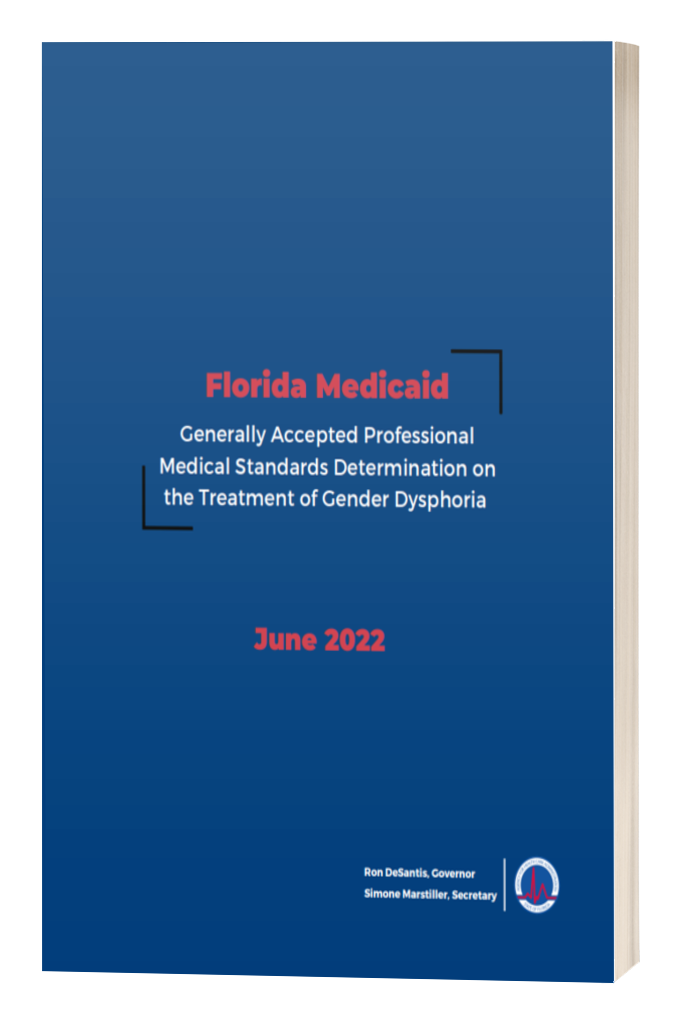
Generally Accepted Professional Medical Standards Determination on the Treatment of Gender Dysphoria
Download
Other Resources
Lupron Victims Hub
The following *incomplete* list of lawsuits against Lupron's manufacturer entail its prescription to ``treat`` prostate cancer, endometriosis, fibroids, and infertility - and are listed in no particular order.
ViewRuling in THE TAVISTOCK AND PORTMAN NHS FOUNDATION TRUST case UK
This is a claim for judicial review of the practice of the defendant, the Tavistock and Portman NHS Foundation Trust, through its Gender Identity Development Service (GIDS) and the first and second Interveners (the Trusts) of prescribing puberty-suppressing drugs to persons under the age of 18 who experience gender dysphoria.
ViewDEFAMATION (LIBEL PER SE); AND 2. INJUNCTIVE RELIEF JURY TRIAL DEMANDED
Legal documents regarding false claims of conversion therapy.
ViewAmerican College of Pediatricians on Therapy Bans
ViewResearch
Do trans- kids stay trans- when they grow up?
In total, there have been three large scale follow-up studies and a handful of smaller ones. I have listed all of them below, together with their results. (In the table, “cis-” means non-transsexual.) Despite the differences in country, culture, decade, and follow-up length and method, all the studies have come to a remarkably similar conclusion: Only very few trans- kids still want to transition by the time they are adults. Instead, they generally turn out to be regular gay or lesbian folks. The exact number varies by study, but roughly 60–90% of trans- kids turn out no longer to be trans by adulthood.
Transgender and Gender Diverse Children and Adolescents: Fact-Checking of AAP Policy
The American Academy of Pediatrics (AAP) recently published a policy statement: Ensuring comprehensive care and support for transgender and gender-diverse children and adolescents. Although almost all clinics and professional associations in the world use what’s called the watchful waiting approach to helping gender diverse (GD) children, the AAP statement instead rejected that consensus, endorsing gender affirmation as the only acceptable approach. Remarkably, not only did the AAP statement fail to include any of the actual outcomes literature on such cases, but it also misrepresented the contents of its citations, which repeatedly said the very opposite of what AAP attributed to them.
The effect of GnRHa treatment on bone density in young adolescents with gender dysphoria
Background More young people with gender dysphoria (GD) are undergoing hormonal intervention starting with gonadotropin-releasing hormone analogue (GnRHa) treatment. The impact on bone density is not known, with guidelines mentioning that bone mineral density (BMD) should be monitored without suggesting when. This study aimed to examine a cohort of adolescents from a single centre to investigate whether there were any clinically significant changes in BMD and bone mineral apparent density (BMAD) whilst on GnRHa therapy.
Occurrence of Acute Cardiovascular Events in Transgender Individuals Receiving Hormone Therapy
In hypogonadal/postmenopausal individuals, hormone therapy has been associated with an increased risk for cardiovascular events (CVEs). A steeply growing population that often receives exogenous hormones is transgender individuals. Although transgender individuals hypothetically have an increased risk of CVEs, there is little known about the occurrence of CVEs in this population.
Pelvic pain and persistent menses in transgender men
Pelvic pain in transgender men can be a clinical challenge and has a broad differential diagnosis. Pelvic pain less than 6 months of duration is considered acute.
Use of puberty blockers for gender dysphoria: a momentous step in the dark
We write with three areas of concern about the increasing use of puberty-blocking medication for gender dysphoria (GD) referred to in your recent leading article.
Cross-sex Hormones and Acute Cardiovascular Events in Transgender Persons: A Cohort Study
Venous thromboembolism (VTE), ischemic stroke, and myocardial infarction in transgender persons may be related to hormone use.
Evidence for an altered sex ratio in clinic-referred adolescents with gender dysphoria
Sociological and sociocultural explanations are offered to account for this recent inversion in the sex ratio of adolescents with gender dysphoria.
Self-Harm and Suicidality in Children Referred for Gender Dysphoria
This study examined rates of self-harm and suicidality (ideation and behavior) in children referred clinically for gender dysphoria compared with their siblings, and referred and nonreferred children from the Child Behavior Checklist (CBCL) standardization sample.
For adolescents with gender dysphoria, it has become common to be offered hormonal treatment to either delay or suppress pubertal development and/or to masculinize or feminize the body. At the same time, it has been our clinical impression that the psychological vulnerability of at least some of these youth has been overlooked.
Studies of children with gender dysphoria (GD) have reported an overrepresentation of autism spectrum disorder (ASD) or traits. One limitation of these studies has been the absence of a concurrent comparison group of children referred for other clinical problems. The present study addressed this gap by comparing 61 children referred for GD with 40 children referred for other clinical concerns (age range, 4–12 years).
In on-line forums, parents have reported that their children seemed to experience a sudden or rapid onset of gender dysphoria, appearing for the first time during puberty or even after its completion. Parents describe that the onset of gender dysphoria seemed to occur in the context of belonging to a peer group where one, multiple, or even all of the friends have become gender dysphoric and transgender-identified during the same timeframe. Parents also report that their children exhibited an increase in social media/internet use prior to disclosure of a transgender identity.
The study’s purpose was to describe a population of individuals who experienced gender dysphoria, chose to undergo medical and/or surgical transition and then detransitioned by discontinuing medications, having surgery to reverse the efects of transition, or both.
What factors, aside from the lack of a rigorous evidence base, might contribute to dangerous medical practices? Can history inform us anything about what might lead physicians to over-enthusiastically and prematurely embrace risky and unproven treatments? History suggests there is most likely a complex interplay of multiple factors, and I discuss some of these in this section. In the subsequent section, I return to discuss the gender affirmative treatment approach for GD youth and highlight some themes that may suggest some parallels with this history.
The Tavistock’s Experiment with Puberty Blockers
The Dutch protocol promised to create a more passable simulacrum of the opposite sex than could be achieved by physical intervention in adulthood. It was therefore embraced by trans-identified children and their parents, by older transgender activists, and by some clinicians specializing in gender dysphoria. The Gender Identity Development Service (GIDS), part of the Tavistock and Portman NHS Foundation Trust, treats children with gender dysphoria from England, Wales, and Northern Ireland. It launched an experimental study of “puberty blockers”—the more friendly term for GnRHa when administered to children with gender dysphoria—in 2011. The experiment gave triptorelin to 44 children, which in all or almost all cases led eventually to cross-sex hormones. This paper describes the origins and conduct of this study and scrutinizes the evidence on its outcomes.
Puberty Blockers and Suicidality in Adolescents Suffering from Gender Dysphoria
Turban et al. (2020) contributed nothing to our knowledge of the effects of suppressing puberty in adolescents.
Given that puberty suppression left up to a third of patients with abnormally low bone density, Joseph et al.’s recommendations are surprisingly complacent. One is to reduce DXA monitoring which ‘can have significant financial implications for healthcare providers’. Another is to change the computation of Z-scores; ‘reference ranges may need to be re-defined for this select patient cohort’. Rather than altering a measure that provides inconvenient findings, practitioners of puberty suppression must record fractures as adverse events.
Puberty Blockers and Suicidality in Adolescents Suffering from Gender Dysphoria
According to Turban, King, Carswell, and Keuroghlian (2020), suicidal ideation is lower in transgender adults who as adolescents had been prescribed “puberty blockers”—gonadotropin-releasing hormone analogs (GnRHa). This finding was derived from a large nonrepresentative survey of transgender adults in the U.S., which included 89 respondents who reported taking puberty blockers. Turban et al. (2020) tested six measures of suicidality and three other measures of mental health and substance abuse. With multivariate analysis, only one of these nine measures yielded a statistically significant association: the respondents who reported taking puberty blockers were less likely to have thought about killing themselves than were the respondents who reported wanting blockers but not obtaining them. This finding was widely reported in the media; the lead author published a column on its implications for health policy in the New York Times (Turban, 2020).
Correction to Bränström and Pachankis
After the article “Reduction in Mental Health Treatment Utilization Among Transgender Individuals After Gender-Affirming Surgeries: A Total Population Study” by Richard Bränström, Ph.D., and John E. Pachankis, Ph.D. (doi: 10.1176/appi.ajp.2019.19010080), was published online on October 4, 2019, some letters containing questions on the statistical methodology employed in the study led the Journal to seek statistical consultations. The results of these consultations were presented to the study authors, who concurred with many of the points raised. Upon request, the authors reanalyzed the data to compare outcomes between individuals diagnosed with gender incongruence who had received gender-affirming surgical treatments and those diagnosed with gender incongruence who had not. While this comparison was performed retrospectively and was not part of the original research question given that several other factors may differ between the groups, the results demonstrated no advantage of surgery in relation to subsequent mood or anxiety disorder-related health care visits or prescriptions or hospitalizations following suicide attempts in that comparison.
Informed Consent for Transgendered Patients
This article reviews the history of informed consent, presents the conflicts of ethical principles, and presents three categories of risk that must be appreciated before informed consent is accomplished. The risks involve biological, social, and psychological consequences. Four specific risks exist in each category. The World Professional Association for Transgender Health’s Standards of Care recommend an informed consent process, which is at odds with its recommendation of providing hormones on demand.
Ethical Concerns About Emerging Treatment Paradigms for Gender Dysphoria
The increasing incidence of requests for medical services to support gender transition for children, adolescents, and adults has consequences for society, governmental institutions, schools, families, health-care professionals, and, of course, patients. The sociological momentum to recognize and accommodate to trans phenomena has posed ethical dilemmas for endocrinologists, mental health professionals, and sexual specialists as they experience within themselves the clash between respect for patient autonomy, beneficence, nonmaleficence, and informed consent. The larger ethical clashes are cultural and therefore political. There is a distinct difference between pronouncements that represent human rights ideals and the reality of clinical observations.
A Follow-Up Study of Boys With Gender Identity Disorder
This study reports follow-up data on the largest sample to date of boys clinic-referred for gender dysphoria (n = 139) with regard to gender identity and sexual orientation.
The Right to Best Care for Children Does Not Include the Right to Medical Transition
Refuting that any child has the right to medically transition
Do children with gender dysphoria have intense/obsessional interests?
This study examined whether children clinically referred for gender dysphoria (GD) show increased symptoms of autism spectrum disorder (ASD).
Epidemiology of gender dysphoria and transgender identity
This review provides an update on the epidemiology of gender dysphoria and transgender identity in children, adolescents and adults.
Temple Newhook et al. (2018) provide a critique of recent follow-up studies of children referred to specialized gender identity clinics, organized around rates of persistence and desistance. The critical gaze of Temple Newhook et al. examined three primary issues: (1) the terms persistence and desistance in their own right; (2) methodology of the follow-up studies and interpretation of the data; and (3) ethical matters. In this response, I interrogate the critique of Temple Newhook et al. (2018).
Adolescents with Gender Dysphoria: Reflections on Some Contemporary Clinical and Research Issues
This article provides an overview of five contemporary clinical and research issues pertaining to adolescents with a diagnosis of gender dysphoria: (1) increased referrals to specialized gender identity clinics; (2) alteration in the sex ratio; (3) suicidality; (4) “rapid-onset gender dysphoria” (ROGD) as a new developmental pathway; (5) and best practice clinical care for adolescents who may have ROGD.
Debate: Different strokes for different folks
A gender social transition in prepubertal children is a form of psychosocial treatment that aims to reduce gender dysphoria, but with the likely consequence of subsequent (lifelong) biomedical treatments as well (gender-affirming hormonal treatment and surgery).
Prevalence studies conclude that fewer than 1 in 10,000 adult natal males and 1 in 30,000 adult natal females experience GD, but such estimates vary widely. GD in adults is associated with an elevated prevalence of comorbid psychopathology, especially mood disorders, anxiety disorders, and suicidality.
Objective This study assessed whether children clinically referred for gender dysphoria (GD) show symptoms that overlap with Autism Spectrum Disorder (ASD). Circumscribed preoccupations/intense interests and repetitive behaviors were considered as overlapping symptoms expressed in both GD and ASD.
The DSM-5 and the Politics of Diagnosing Transpeople
In the DSM-5, there has been a change in the diagnosis for transpeople of all ages from Gender Identity Disorder (GID) to Gender Dysphoria (GD), in part to better indicate the distress that transpeople may experience when their gender identity feels incongruent.
Legal & Ethical Considerations For Informed Consent In Clinical Trials
The purpose of this article is to provide some thoughts as to the role each of us can play in clarifying some issues related to informed consent. These perspectives are based on my experiences as a registered nurse in a career that spanned more than three decades in private hospital settings, a private surgical association, and a university health system.
The treatment for transsexualism is sex reassignment, including hormonal treatment and surgery aimed at making the person’s body as congruent with the opposite sex as possible. There is a dearth of long term, follow-up studies after sex reassignment.
Detransition-Related Needs and Support: A Cross-Sectional Online Survey
The aim of this study is to analyze the specific needs of detransitioners from online detrans communities and discover to what extent they are being met.
This study evaluated the characteristics of suicide news articles in the digital press, their adherence to World Health Organization (WHO) recommendations, and the effectiveness of interventions.
Cardiovascular Disease Risk Factors and Myocardial Infarction in the Transgender Population
Despite their growing number and increasing specific medical needs, there has been a lack of research on cardiovascular disease (CVD) and CVD risk factors in this population.
Psychiatry’s ethical involvement in gender-affirming care
To reflect on the role of psychiatry in authorising physical treatments for Gender Dysphoria and to examine the quality of evidence for gender-reassignment.
One Size Does Not Fit All: In Support of Psychotherapy for Gender Dysphoria
We agree with Turban et al.’s (2020) position that therapies using coercive tactics to force a change in gender identity have no place in health care. We do, however, take issue with their problematic analysis and their flawed conclusions, which they use to justify the misguided notion that anything other than “affirmative” psychotherapy for gender dysphoria (GD) is harmful and should be banned.
Peer Contagion in Child and Adolescent Social and Emotional Development
In this article, we examine the construct of peer contagion in childhood and adolescence and review studies of child and adolescent development that have identified peer contagion influences. Evidence suggests that children’s interactions with peers are tied to increases in aggression in early and middle childhood and amplification of problem behaviors such as drug use, delinquency, and violence in early to late adolescence.
A Typology of Gender Detransition and Its Implications for Healthcare Providers
Gender detransition is an emerging yet poorly understood phenomenon in our society. In the absence of research, clinicians and researchers have applied the concept of detransition differently, leading to inconsistencies in its use. The article suggests a typology of gender detransition based on the cessation or the continuation of a transgender identity to address this issue.
This prospective study examines the clinical characteristics of children (n = 79; 8.42–15.92 years old; 33 biological males and 46 biological females) presenting to a newly established, multidisciplinary Gender Service in New South Wales, Australia, and the challenges faced by the clinicians providing clinical services to these patients and their families.
Transgender youth may initiate GnRH agonists (GnRHa) to suppress puberty, a critical period for bone-mass accrual. Low bone mineral density (BMD) has been reported in late-pubertal transgender girls before gender-affirming therapy, but little is known about BMD in early-pubertal transgender youth.
Outbreak: On Transgender Teens and Psychic Epidemics
Currently, we appear to be experiencing a significant psychic epidemic that is manifesting as children and young people coming to believe that they are the opposite sex, and in some cases taking drastic measures to change their bodies.
How common is intersex? a response to Anne Fausto-Sterling
If the term intersex is to retain any meaning, the term should be restricted to those conditions in which chromosomal sex is inconsistent with phenotypic sex, or in which the phenotype is not classifiable as either male or female. Applying this more precise definition, the true prevalence of intersex is seen to be about 0.018%, almost 100 times lower than Fausto-Sterling s estimate of 1.7%.
This study attempts, for the first time, to isolate and examine the question of current psychosocial harm for former SOCE participants among sexual minorities in representative population data.
Puberty Blockers, Cross-Sex Hormones, and Youth Suicide
Lowering legal barriers to make it easier for minors to undergo cross-sex medical interventions without parental consent does not reduce suicide rates—in fact, it likely leads to higher rates of suicide among young people in states that adopt these changes. States should instead adopt parental bills of rights that affirm the fact that parents have primary responsibility for their children’s education and health, and that require school officials and health professionals to receive permission from parents before administering health services, including medication and “gender-affirming” counseling, to children under 18. States should also tighten the criteria for receiving cross-sex treatments, including raising the minimum eligibility age.
Aricles
Podcasts
Letter Templates
Letter to opt out of all CSE and SOGI.
Teacher Curriculum Request Letter
Letter to find out curriculum.
Letter to school board about promotion and affirmation of gender dysphoria.
Sample Letter to Superintendent
Letter to school superintendent regarding concerns about policies that promote affirmation of gender dysphoria.
Letter to school teacher regarding concerns about policies that promote affirmation of gender dysphoria.
Letter templates for those in the UK who are concerned about the gender ideology at their schools.
National Task Force for Therapy Equality
Letter to oppose therapy bans.
Letter from American College of Pediatricians
Letter to oppose therapy bans.
Template therapy ban letter to legislators
Letter to oppose therapy bans.
Serious Harmful Implications of Therapy Ban Bills
Letter to oppose therapy bans.




